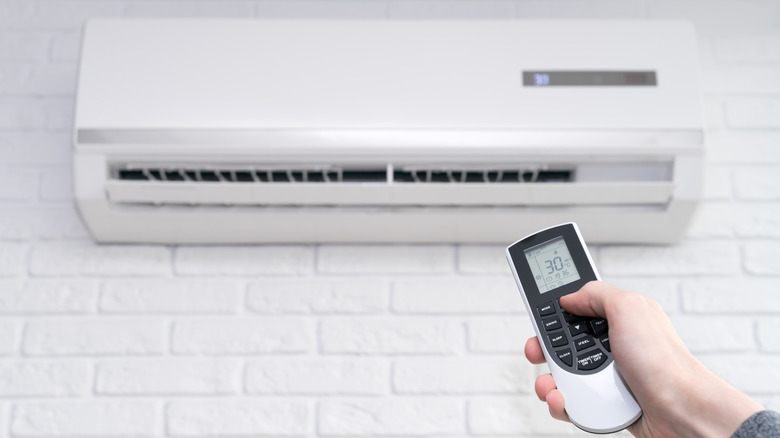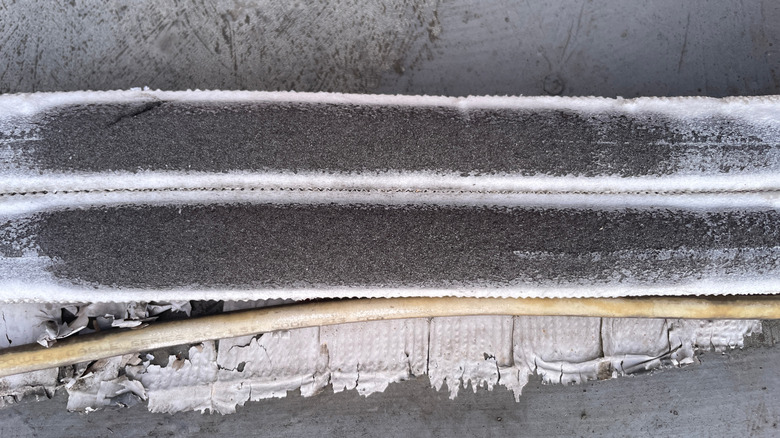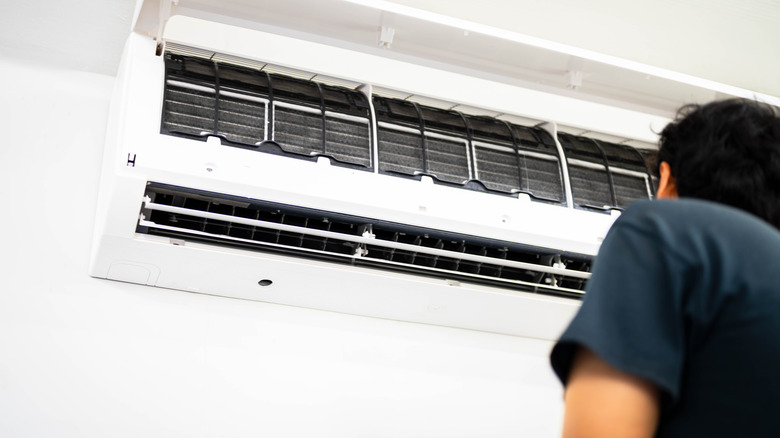Why Mold Is Growing Inside Of Your Newly Purchased Air Conditioner
We may receive a commission on purchases made from links.
When you set up your brand-new air conditioner, you expect crisp, clean, and cool air, not a musty smell wafting through your room. But the surprising truth is that even new AC units aren't immune to mold. In fact, Midea recently recalled about 1.7 million of its U and U+ window air conditioners in the U.S. This happened after reports revealed that their design could allow mold to form inside the unit. The company warned that the shape of these models might trap moisture, creating the perfect conditions for mold to grow and pose health risks to some people.
So if your new AC is already showing signs of mold, you're not alone. And it's probably not your fault, because it doesn't always happen due to poor maintenance. But once you understand why it does happen, you can then figure out how to keep mold from getting into your home, starting with what's really going on inside your air conditioner.
How mold takes hold in a new AC
You might not think much about mold when you buy a new air conditioner, but it can quietly become a problem, especially in certain designs. In fact, one of the mistakes everyone makes when buying a new air conditioner is overlooking how its design affects drainage and moisture control For example, some U-shaped air conditioners are built in a way that can trap water inside the unit. When that water doesn't drain quickly enough, it can create the perfect environment for mold to grow. This can even lead to breathing problems and infections. But that's not the only way mold sneaks in.
Sometimes, the AC's drain line gets clogged with outdoor debris. When that happens, water backs up inside the unit, and the trapped moisture ends up feeding mold growth. Other common culprits include poorly fitted filters or access doors on the AC unit. Gaps in these areas can pull in unfiltered outdoor air, dust, and mold spores, especially if your system is in a damp basement or outside. This makes your system work harder and recirculates mold spores throughout your home.
How to get rid of mold in your AC
You can keep your air conditioner from smelling with a few smart maintenance habits. Mold loves moisture, so any standing water inside your AC is basically an invitation. You may need to install a new drain plug or a DIY drainage kit to help water flow properly. Cleaning your air conditioner regularly (and swapping out those filters on schedule) keeps everything running efficiently and prevents mold from settling in.
Make sure your AC is properly ventilated to allow good airflow, and if your home tends to get humid, consider using a dehumidifier. Maintaining the right humidity levels will help prevent mold from forming in the first place. Another layer of protection against mold is improving your indoor air quality. You can use air purifiers and compatible filters to help capture mold spores, dust, pollen, and other allergens. Just make sure you're using the right type of filter for your unit, and replace it regularly to keep it effective.


